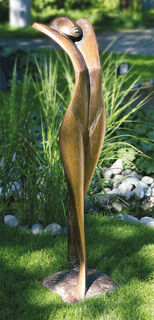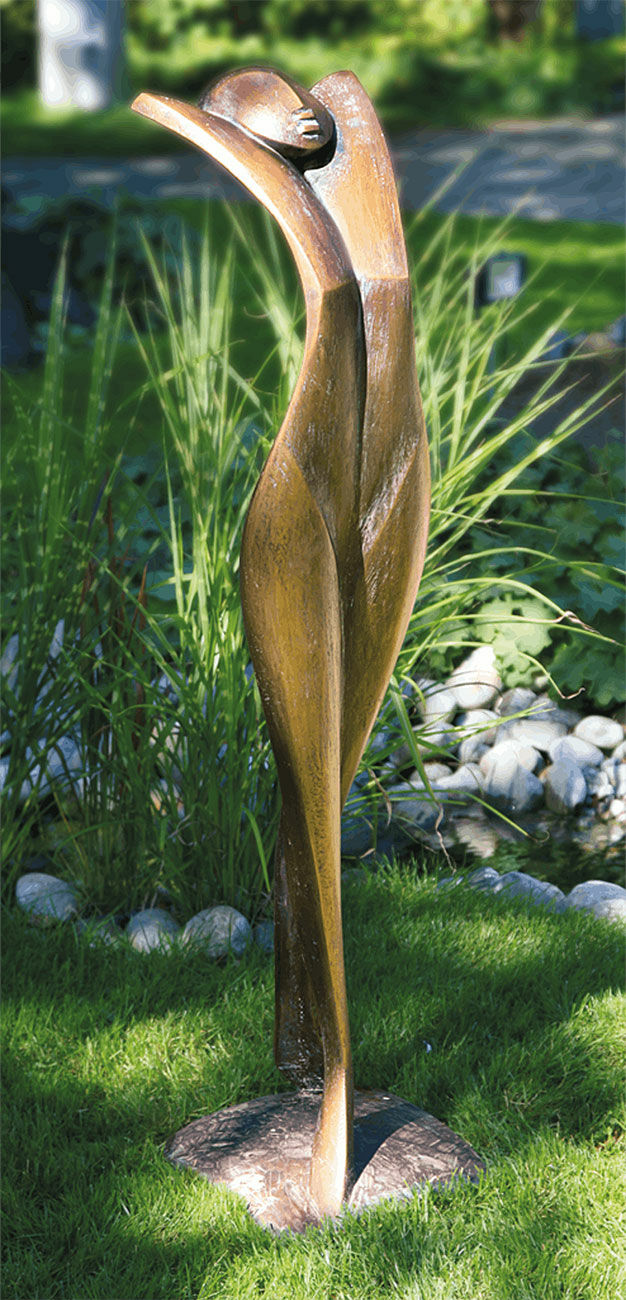Garden sculpture "Nude", bronze
Garden sculpture "Nude", bronze
Quick info
limited, 12 copies | numbered | signed | bronze | hand chased and patinated | size 122 x 30 x 30 cm (h/w/d) | weight approx. 29.5 kg
Detailed description
Garden sculpture "Nude", bronze
The sculpture "Nude" ranges between abstraction and concrete representation. The female body is schematically broken down - and yet of great erotic radiance.
Sculpture in bronze, cast using the Lost-Wax-Process, chiselled and patinated by hand. Limited to 12 numbered and signed copies. Size 122 x 30 x 30 cm (h/w/d). Weight approx. 29,5 kg.
About Pepi Pescollderungg
The South Tyrolean Pepi Pescollderungg was born in 1945 in Stern/Abteital. He attended the art school in Wolkenstein and the art institute in Ortisei. Since 1977, he has been a freelance sculptor.
Pescollderungg preferred material is wood. His oeuvre includes works of great abstraction but also filigree sculptures with traditional subjects, which he artfully works out of a single massive block of wood. He attributes an explicit purpose to his more abstract works. For example, an oak sculpture that marks the end of a sculpture path in Reckenthal, Germany. This sculpture deliberately intended to be a study in form and a place to sit down and reflect.
An alloy of copper with other metals (especially with tin) used since ancient times.
When casting bronze, the artist usually applies the lost-wax technique which is dating back more than 5000 years. It's the best, but also the most complex method of producing sculptures.
First, the artist forms a model of his sculpture. It is embedded in a liquid silicone rubber mass. Once the material has solidified, the model is cut out. The liquid wax is poured into the negative mould. After cooling down, the wax cast is removed from the mould, provided with sprues and dipped into ceramic mass. The ceramic mass is hardened in a kiln, whereby the wax flows out (lost mould).
Now we finally have the negative form, into which the 1400° C hot molten bronze is poured. After the bronze had cooled down, the ceramic shell is broken off and the sculpture is revealed.
Now the sprues are removed, the surfaces are polished, patinated and numbered by the artist himself or, to his specifications, by a specialist. Thus, each casting becomes an original work.
For lower-quality bronze castings, the sand casting method is often used which, however, does not achieve the results of a more complex lost-wax technique in terms of surface characteristics and quality.
Term for an art object (sculpture, installation), which is produced in multiple copies in a limited and numbered edition according to the artist‘s will.
Artist's multiples have been called the most accessible and affordable art on the market.
A plastic work of sculptural art made of wood, stone, ivory, bronze or other metals.
While sculptures from wood, ivory or stone are made directly from the block of material, in bronze casting a working model is prepared at first. Usually, it is made of clay or other easily mouldable materials.
The prime time of sculpture after the Greek and Roman antiquity was the Renaissance. Impressionism gave a new impulse to the sculptural arts. Contemporary artists such as Jorg Immendorf, Andora, and Markus Lupertz also enriched sculptures with outstanding works.


